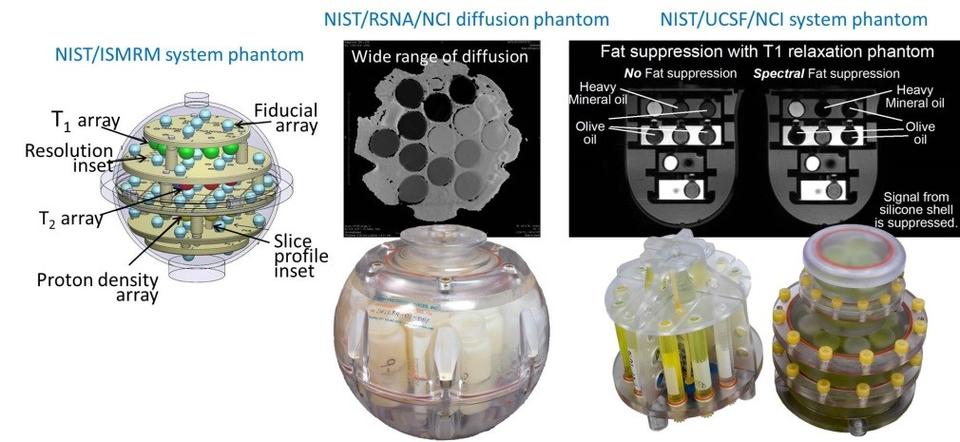Summary
The Quantitative MRI project develops calibration structures (phantoms) and validates quantitative imaging protocols for magnetic resonance imaging (MRI), focusing on standards for cancer, brain, and multimodal imaging.
Description

Future directions may focus on multimodal imaging, techniques that use MRI as either a base or as a complimentary technique. Multimodal imaging combines information from two or more imaging modalities such as MRI, computed tomography (CT), positron emission tomography (PET), and ultrasound (US). These combined techniques such as PET-MR or MR-US have unique challenges when developing quantitative imaging protocols.
NIST has an in-house variable field preclinical scanner and access to other clinical scanners in the Boulder and Denver area. These projects involve working with collaborators from academic institutions, professional societies (ISMRM, RSNA), and possibly other federal agencies to develop the calibration structures and quantitative imaging protocols.
Major Accomplishments
Developed and commercialized MRI system phantom (with ISMRM), isotropic diffusion phantom (with NCI, RSNA), and breast phantom (with NCI, UCSF).
Phantoms delivered to clinical sites and major clinical trials, including Track-TBI and ISPY2.
New work includes a DTI phantom with CENC and a phantom for multimodal techniques.
Information on postdoctoral research opportunities here.

